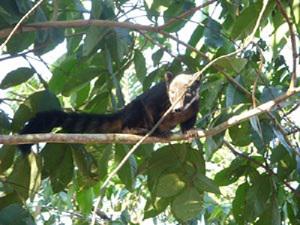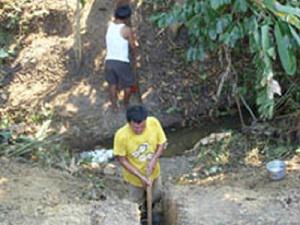Nixon Yuimachi
This project aims to create a community-based conservation area that can protect the biodiversity of the Amazon Rainforest using indigenous knowledge and values. Also to protect endangered animal (terrestrial and aquatic) and plant species for the future generations, and to share this resource and knowledge through educational programs and eco-tourism.

Coati.
Yoina Baon Nii" will begin as a small conservation area within the territory of the Shipibo community of San Francisco de Yarinacocha. Shipibo indigenous peoples have managed the biodiversity of our forests for generations. This project will build on that tradition by creating a protected area to protect the biodiversity of the Amazon rainforest and serve as a model for other indigenous communities to protect their forests. This protected area will serve as a refuge and rehabilitation area for endangered animal and plant species. It will also be an educational tool for the school children in my community and also as an eco -tourism destination. It will also help us to revive Shipibo culture and our spiritual ties to the forest.

Dam construction.
This area will be protected from hunters and loggers to act as a refuge for endangered animal and plant species. The area will be reforested and actively managed by the community itself. We plan to reforest the area with endangered mahogany trees, medicinal plants, and other food plants to attract and provide food for animals within the reserve. Many endangered species are already living in this protected area including sajino (Tayassu tajacu), tigrillo (Leopardus pardalis), achuni (Nasua nasua), and many more. There are also mono pichicos (Saguinus fuscicollis), tutamono (Aotus nigriceps), and caiman. We will also be protecting endangered aquatic species such as the large paiche fish (Arapaima gigas) and gamitana (Colossoma macropomum) and Amazon manatee.
By leading by example, I hope that we can show communities in the Amazon that the forest is worth more than any economic extractive industries. We hope to make this sustainable through eco-tourism endeavours so that the community can gain from protecting the environment while still allowing communities to have the economic resources to maintain the project and provide work for community members.